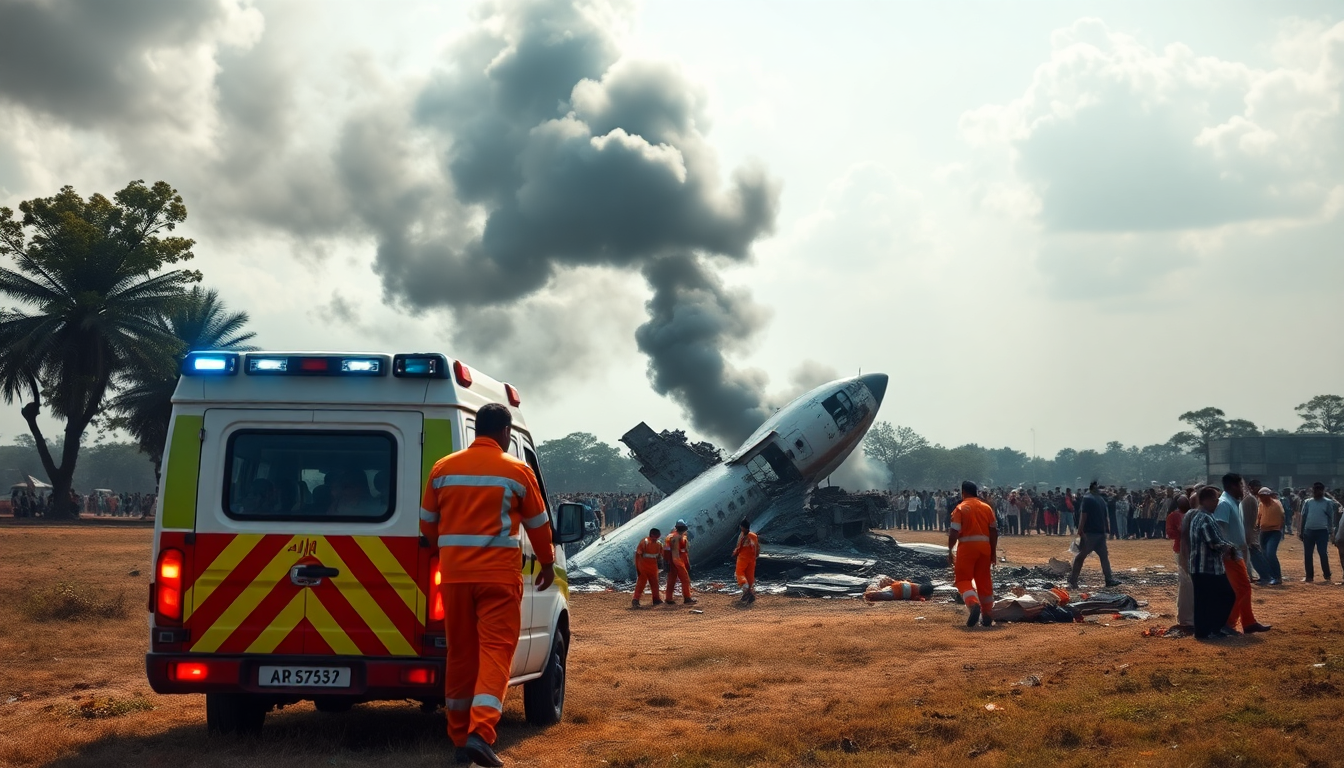Table of Contents
As if life needed another reminder of its fragility, a recent Air India plane crash has sent shockwaves through the nation. The calamity unfolded in a way that would make even the most hardened of souls pause. Imagine this: one moment, you’re planning a wedding, surrounded by excitement, and the next, you’re grappling with the grim reality of charred bodies and shattered dreams.
Nayan Vagadaya’s drive to the hospital was not just a trip; it was a desperate race against a ticking clock of grief, as he sought to identify his uncle among the victims. But what awaited him was a room filled with the remnants of a tragedy that, quite frankly, should never have happened.
Unraveling the chaos
The scene at Ahmedabad’s Civil Hospital was nothing short of harrowing. Family members, wide-eyed and frantic, were met with the stench of death and despair. Vagadaya described the moment as surreal—his uncle, who had planned to escort his daughter to her wedding, was now just another statistic in this gruesome tally of loss.
The plane had crashed into a bustling dining hall, where students were merrily indulging in their lunch, completely unaware that their lives were about to be turned upside down.
As authorities confirmed at least 269 fatalities, including nearly all passengers aboard, the situation morphed from panic to mourning.
The dining hall, once a sanctuary for students, became a haunting reminder of life’s unpredictability. “In a minute, everything has changed,” Vagadaya lamented, his words resonating with the heavy silence that followed.
Questions without answers
What could possibly go wrong during takeoff? That’s the question on everyone’s lips.
The plane, a Boeing 787 Dreamliner, had just taken off when it inexplicably plummeted back to earth, leaving experts scratching their heads. The pilots, who issued a “Mayday” distress call, were met with an eerie silence thereafter. What could have happened in those fleeting moments that turned a routine flight into a nightmare? Aviation experts have their theories, but the answers remain elusive.
Eyewitness accounts and CCTV footage paint a chaotic picture, showing the aircraft’s nose rising during descent—a potential stall. But amidst the technical jargon, one cannot help but wonder: why did this happen during broad daylight with good visibility? Was it pilot error? Poor maintenance? Or something else entirely? It’s enough to make you question the very system meant to keep us safe.
Reflecting on past tragedies
India has witnessed its fair share of aviation disasters, but each incident raises more questions than it answers. Air India, the country’s former national carrier, has been no stranger to controversy. Just last year, a flight skidded off a runway, claiming lives and raising eyebrows about safety standards. The pattern seems to repeat itself. And yet, “no accountability” seems to be the motto when it comes to these tragedies.
With the privatization of Air India under the Tata Group, one would think that safety protocols would be prioritized. Instead, we’re met with tales of regulatory fines and training mishaps. It’s a slap in the face for those grieving the loss of their loved ones. At the very least, one would expect a thorough investigation into what went wrong. But as we’ve seen time and time again, the results may just end up gathering dust.
A nation in mourning
The aftermath of the crash has left families shattered and communities reeling. Rahul Bhatia, a medical student, found himself desperately trying to locate friends who were missing. The weight of tragedy was palpable in the air, as he recounted the heartbreaking tales of lives cut short. One friend’s wife, pregnant and full of hope, was lost in an instant when the plane tore through the dormitory ceiling. “I’ll remember this for the rest of my life,” Bhatia said, his voice barely a whisper.
And there’s the sole survivor, Viswashkumar Ramesh, clinging to life with questions swirling around him. His miraculous escape from the wreckage is a story of luck amidst chaos, but it also highlights the stark reality of what happened that day. Why some survived while others perished remains a mystery that feels as bitter as the ashes left behind.
As Prime Minister Narendra Modi visited the crash site, his presence felt almost performative. While families are left to grapple with their loss, politicians seem more concerned about optics. “This is not the time for a photo session,” one grieving relative snapped at the visiting minister. The disconnect between those in power and the people they serve couldn’t be more apparent.
Looking ahead
The inquiry into this tragedy is just beginning, and one can only hope it leads to meaningful change. But as history has shown, these investigations often lead to more questions than answers. The focus will likely be on the actions of the pilots, the airline’s maintenance records, and Boeing’s role in this disaster. With a track record of safety, the Dreamliner has long been touted as one of the safest aircraft. Yet, here we are, faced with the reality of its first fatal crash.
As families mourn, the rest of us are left to ponder: How many more tragedies will it take before real change occurs? When will the industry prioritize safety over profit? These are questions that linger in the air, heavy with the weight of loss and the hope for a safer tomorrow.
In the end, we can only hope that this tragedy serves as a wake-up call. The stakes are high, and lives are on the line. It’s time for accountability, transparency, and a commitment to safety that extends beyond mere rhetoric.





